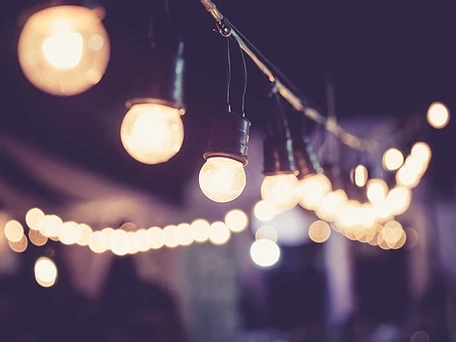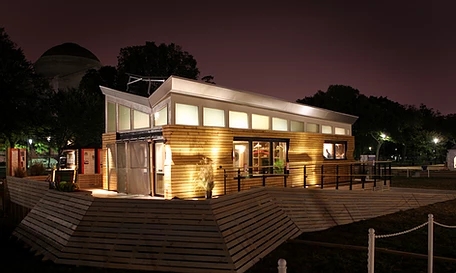
When the old tungsten lamps or incandescent lamps are disappearing in the market today, do you, as a consumer, feel lost in the aisle to find lighting? Let us tell you everything about LED lights.
The era of incandescent lamps is dead, and whether you like it or not, it’s time for the road of lamps and lanterns to move on. Traditional incandescent light bulbs are over, but they are not banned, but because the “Energy Independence and Security Act” (EISA) passed in the United States in 2007 requires them to increase efficiency by approximately 25%. Without reducing the luminous flux (brightness), this is impossible to achieve. On the contrary, manufacturers have turned to more energy-efficient technologies, such as discharge luminaires (CFL) commonly known as electric bulbs, quartz lamps and LED lamps.
Of course, not everyone accepts these new generation lamps. Many people do not understand, if these new-style lamps are good, why do we need to authorize them? In fact, after more than a century of old tungsten lamps or incandescent lamps, we have become their accessories. Not only are they cheap, but they also emit a warm and familiar glow. It is not easy to get yourself out of them: when the United States began to implement the 40 and 60 watt phase-out on January 1, 2007, about half of the country’s 3.2 billion light bulb sockets were still using incandescent bulbs.
So what should we do now? According to a survey conducted by switch manufacturer Lutron, two-thirds of American adults are unaware of the elimination bill, and only one-tenth are “very aware” of replacement options. Most of us may buy quartz lamps without paying attention. They are about one dollar each, they are very cheap, and their appearance, feel and function are almost exactly the same as traditional incandescent lamps. But they are only about 25% more efficient than traditional incandescent lamps-which is enough to meet EISA standards. But at the same time, due to its inherent flaws, the generally unpopular CFL is steadily losing the market.
What is left is the LED lamp, which is the most sustainable and exciting product to replace the old tungsten lamp or incandescent lamp. For new users, their efficiency is very high: the average efficiency of LED bulbs is 100 lm/w (lumens per watt), while incandescent lamps are about 13 lm/w, and halogen lamps are about 18 lm/w. Of course, LED lights also have their disadvantages: buying LED bulbs is not as straightforward as buying incandescent bulbs from small shops on the street, and the initial cost is high. But once you understand the technology and unparalleled versatility provided by LEDs, you will see that the demise of incandescent lamps is actually an opportunity. Below we hope to resolve your doubts and help you navigate a dizzying array of options.
Isn’t LED light very expensive?
The days of a US$26 LED bulb are over. With the increase in demand, the manufacturing process has become smoother, the cost has dropped sharply, and the price has fallen below US$7. Of course, there is still a long way to go from the 50% incandescent lamp market. But users need to take this into consideration, that is, LED bulbs consume only one-sixth of the energy of incandescent lamps, and the continuous use time is 25 times that of incandescent lamps. After replacing a 60-watt incandescent bulb with an LED bulb, the lifetime of this LED will save 1,000 Hong Kong dollars in energy costs. If an ordinary family uses LED bulbs instead of all incandescent lamps, the annual energy expenditure can be reduced by about US$160 per year.

I miss those warm lights.
When the color temperature of the bulb is higher, its light becomes colder. The luminosity of a candle is about 1500K color temperature. And those annoying energy-saving lamps run around 4500K. As an alternative to incandescent lamps, LED bulbs usually have a color temperature of 2700K, which is equivalent to a typical warm white incandescent lamp.
But this is only part of the story. The quality of the bulb also depends on its color accuracy, which is the color rendering index (CRI). The higher the color rendering index of the bulb, the closer to the real the color it displays. The color rendering index of incandescent lamps is about 100, but the color rendering index of most compact fluorescent lamps and LED bulbs is about 80s. According to a recent study, only a few LED bulbs have a color rendering index of 90s, but this effect will improve over time. Please note that the color rendering index (CRI) is not necessarily listed on the packaging, so you may need to search for information on the manufacturer’s website.
These bulbs are dimmable, right?
LED bulbs are sold as “dimmable” and can correspond to most of the newer switch systems. The best dimming degree can reach about 5%. If you need to make sure that the LED bulb you buy has been verified and can match your switch system, you can check the compatible dimmer list on the manufacturer’s website.
If you need to install a new switch system, please purchase products specially designed for LED bulbs, such as MELITE’s Dimmable LED MR16 Spot Light or its T5/T8 Smart E series. But note that: sometimes these new switch systems are larger than the old dimmers. In most cases, this shouldn’t be a problem, but if your electrical box is too crowded, you may need to upgrade it to accommodate the new dimmer.